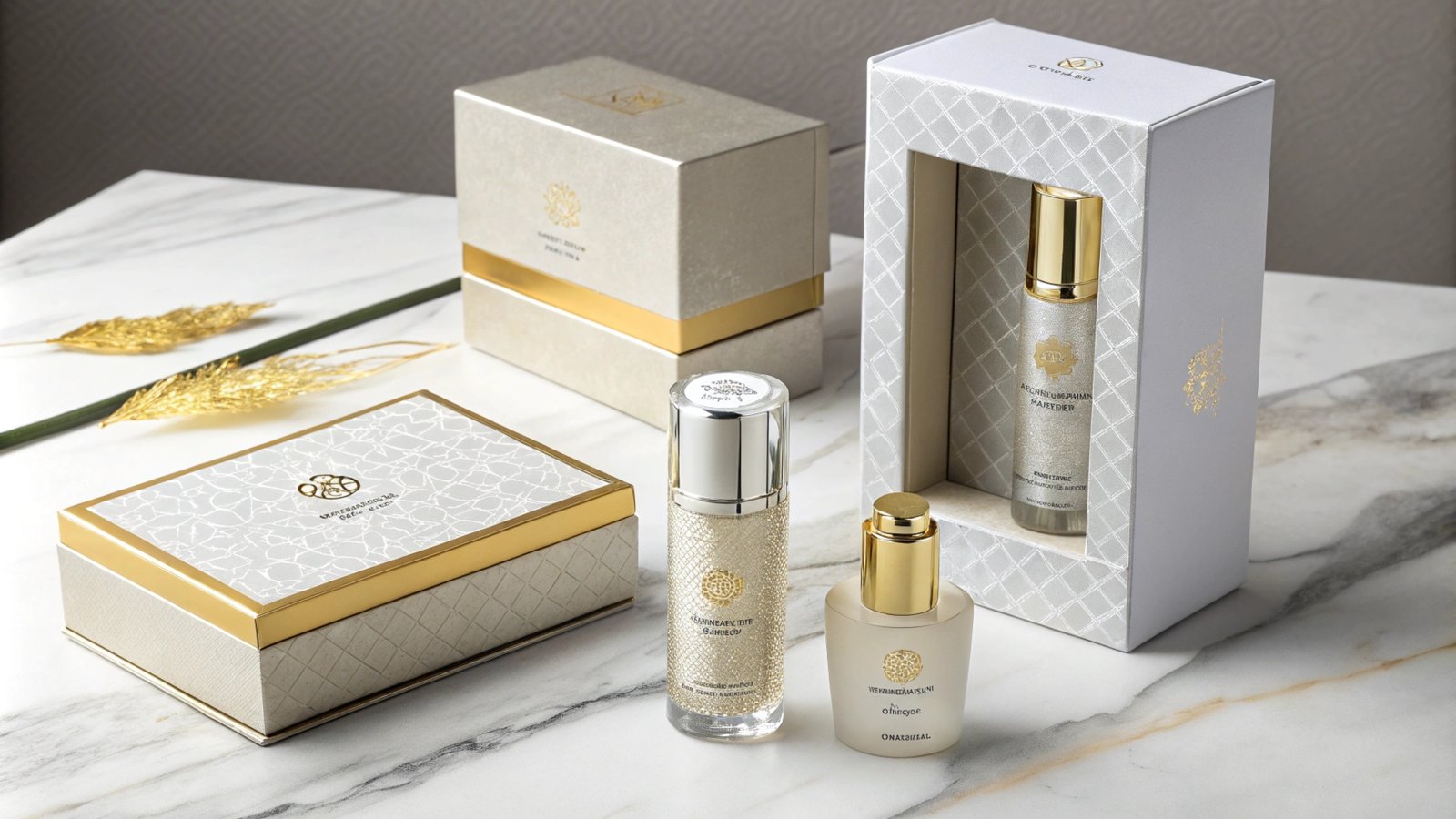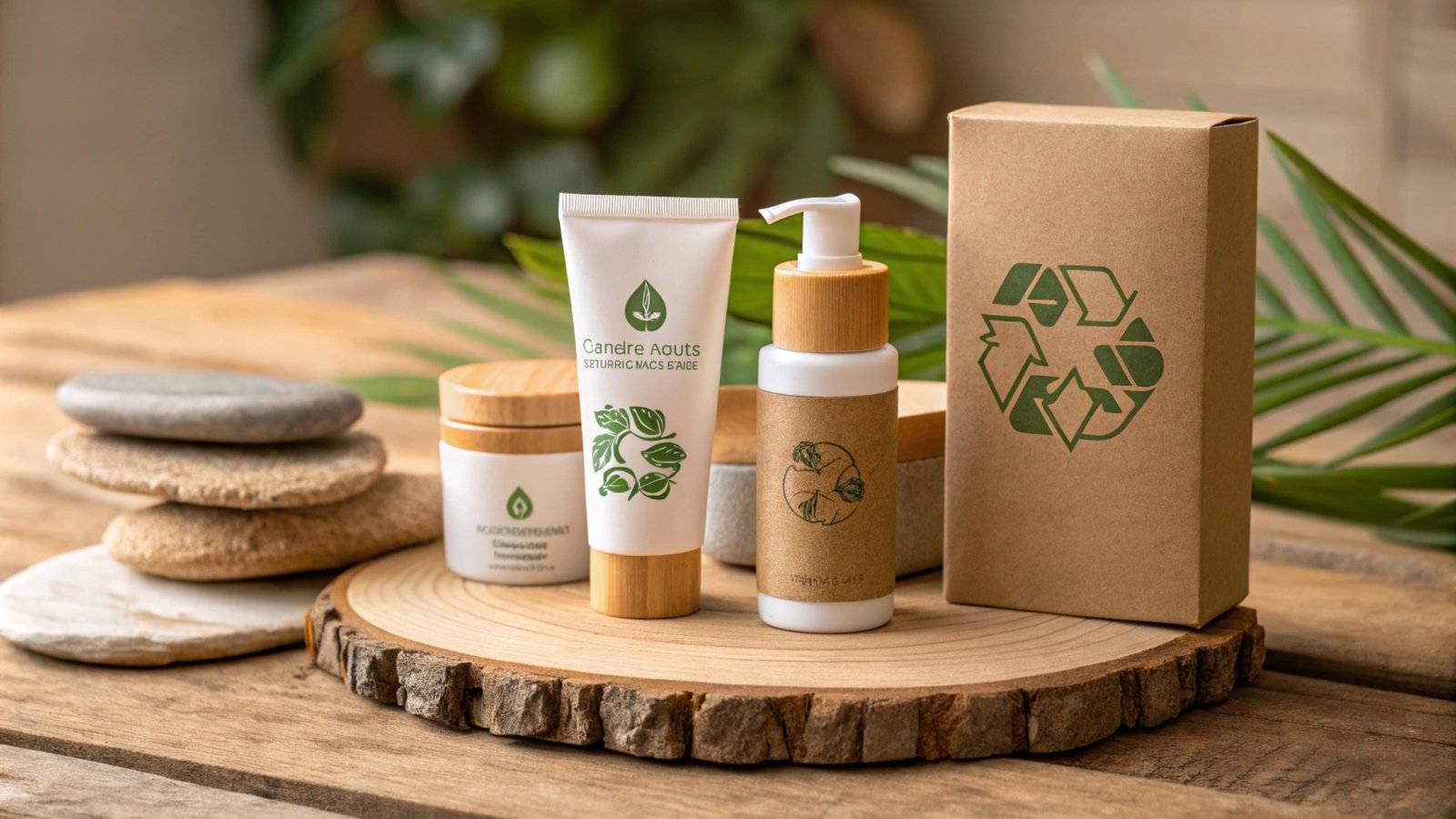
Choosing the right packaging for cosmetics can significantly impact both product appeal and customer experience. With consumers becoming more discerning, the packaging must not only protect the product but also communicate the brand’s values. Whether you’re a new brand launching your line or an established company looking to refresh your packaging, the right choice can make all the difference.
The box you choose for cosmetics should balance practicality with aesthetics. The packaging needs to ensure product safety, offer a visually appealing design, and reflect your brand identity. Materials, sustainability, and consumer preferences all play crucial roles in this decision.
Packaging has become a critical element of the customer journey. It’s no longer just about function – it’s about making an impact. Let's explore the best options for cosmetic packaging, the materials to consider, and the trends shaping the industry.
[Table of contents]
What is the best packaging for cosmetics?
When selecting the best packaging for cosmetics, functionality and aesthetics must go hand in hand. From sleek, high-end glass jars for serums to sturdy cardboard boxes for skincare kits1

The best packaging for cosmetics depends on the type of product and the brand’s goals. For instance, luxury skincare brands often opt for high-end materials like glass or premium metals, as these materials reflect the product's quality. On the other hand, budget-conscious or eco-conscious brands may choose recyclable plastics or cardboard, which balance cost-effectiveness with sustainability.
Different Types of Packaging for Cosmetics
-
Glass Jars and Bottles: Often used for high-end creams, serums, and perfumes, glass is a premium material that adds sophistication to cosmetic packaging. It's heavy, which makes it ideal for showcasing expensive, high-quality products, but it can be breakable and heavy to ship.
-
Plastic Bottles and Tubes: Common in mass-market products, plastic is lightweight, durable, and cost-effective. However, consumers are increasingly concerned about plastic waste, so it’s important to choose recyclable or biodegradable plastic options.
-
Cardboard Boxes: For cosmetic kits or palettes, cardboard packaging is a popular choice. It's customizable, eco-friendly, and provides ample space for branding. A sturdy cardboard box can also be used to offer extra protection to the product inside.
-
Metal Tins or Cans: Often used for lip balms or solid perfumes, metal tins offer a unique, vintage aesthetic and are highly durable.
What material is used for cosmetic packaging?
The material you choose for cosmetic packaging depends on the type of product, its target market, and its sustainability goals. Let’s break down the most common materials used in cosmetic packaging.
Materials used in cosmetic packaging vary greatly, and each offers distinct benefits. Whether you’re looking for durability, aesthetics, or eco-friendliness, the material choice will impact your brand's perception.
Common Packaging Materials for Cosmetics
-
Glass: Glass is used primarily for perfumes, premium skincare products, and certain cosmetics like foundations or compact powders. Glass is inert, which means it won’t interact with the product inside, ensuring that it remains uncontaminated. It also has a high-end appeal, making it a popular choice for luxury brands.
-
Plastic: This is by far the most common material used for cosmetic packaging. It's cost-effective, lightweight, and versatile. However, consumers are increasingly concerned about plastic waste, so there is a growing emphasis on using recyclable and biodegradable plastic.
-
Aluminum: Commonly used for tubes of lotions, deodorants, and sprays, aluminum is lightweight and can be easily recycled. It also offers a shiny, premium finish that appeals to higher-end cosmetic brands.
-
Cardboard: Used in outer packaging (boxes) and sometimes for primary packaging (e.g., for makeup sets), cardboard is an eco-friendly choice when it's sustainably sourced and recyclable.
-
Biodegradable Plastics: As eco-consciousness grows, biodegradable plastic options are becoming more popular. These are often made from plant-based materials, which decompose more quickly than traditional plastic.
Choosing the Right Material for Your Product
When choosing a material, it’s important to consider the product’s shelf life, packaging aesthetics, and cost. For example, glass might be ideal for a high-end serum, but if you're selling budget skincare, you might opt for a lighter plastic to cut down on production costs.
What is the most sustainable packaging for cosmetics?
Sustainability in packaging has become a major trend in the cosmetic industry. Consumers are becoming more aware of the environmental impact of their purchases, and many are willing to pay a premium for products with eco-friendly packaging.

Sustainable packaging for cosmetics is an essential consideration in today's market. The most sustainable packaging materials are those that can be recycled, reused, or biodegraded easily, helping to reduce the overall carbon footprint of your product.
Sustainable Packaging Options
-
Recycled Materials: Using recycled paper, glass, and plastic is one of the most straightforward ways to reduce environmental impact. Many cosmetic brands have adopted recycled packaging to appeal to eco-conscious consumers.
-
Biodegradable Materials: Materials that decompose naturally, such as biodegradable plastics or plant-based packaging, are becoming increasingly popular in cosmetics. These options break down over time, reducing the environmental burden.
-
Refillable Packaging: Brands like Lush and Kiehl's have embraced refillable packaging, allowing customers to refill their products rather than purchase new packaging. This reduces waste and encourages consumers to return the packaging.
-
Minimalistic Packaging: Another strategy for sustainability is reducing the amount of packaging used. By designing minimalist packaging, brands can save on material costs and reduce waste.
Benefits of Sustainable Packaging
- Reduced Environmental Impact: Using recyclable or biodegradable materials minimizes waste and the demand for raw materials.
- Consumer Appeal: Eco-conscious consumers are increasingly looking for brands that prioritize sustainability. Offering sustainable packaging can boost brand loyalty and attract a larger customer base.
- Regulatory Compliance: Governments around the world are introducing regulations to reduce plastic waste. Sustainable packaging ensures compliance with these regulations.
How are cosmetics packaged?
The packaging process for cosmetics involves several stages, from selecting the materials to designing the packaging, printing labels, and finally, filling the containers. The packaging must protect the cosmetic product, maintain its quality, and ensure that it remains appealing to consumers.
Cosmetic packaging is a multi-step process that combines design, material selection, and production techniques. Whether it’s a simple tube of lotion or a high-end perfume bottle, the process needs to be efficient and accurate.
Stages of Cosmetic Packaging
-
Material Selection: The first step is to choose the right materials based on the type of product being packaged. For instance, a liquid foundation will require a pump bottle, while a compact powder might require a snap-close container.
-
Designing the Packaging: The design stage involves creating a visual identity for the product. This includes choosing colors, fonts, and logos that reflect the brand’s message and appeal to the target market.
-
Filling and Sealing: Once the packaging design is finalized, the product is filled into the containers. The packaging is then sealed, ensuring that the product remains safe from contamination.
-
Labeling and Printing: This step involves applying labels that contain important product information such as ingredients, usage instructions, and branding. High-quality printing ensures the labels are clear and legible.
-
Quality Control: Finally, the finished products go through quality checks to ensure that everything is properly sealed, labeled, and meets safety standards before they are shipped.
Packaging for Different Types of Cosmetics
- Creams and Lotions: Typically packaged in tubes, jars, or bottles with pumps.
- Powders and Foundations: Often packaged in compact cases with mirrors or in squeezable bottles.
- Perfumes: Usually in glass bottles with spray nozzles.
- Lipsticks: Encased in twist-up tubes or metal containers.
Conclusion
When choosing packaging for cosmetics, consider not just the material but also the design, sustainability, and functionality. Whether it’s glass, plastic, or cardboard, the packaging should reflect your brand's identity and meet consumer needs. By making thoughtful choices about packaging, you can enhance your product’s appeal, ensure its protection, and meet the growing demand for sustainable options.
-
there's no one-size-fits-all solution. Thebest packaging is the one that protects the product, appeals to thetarget customer,and aligns with the brand's values. ↩

